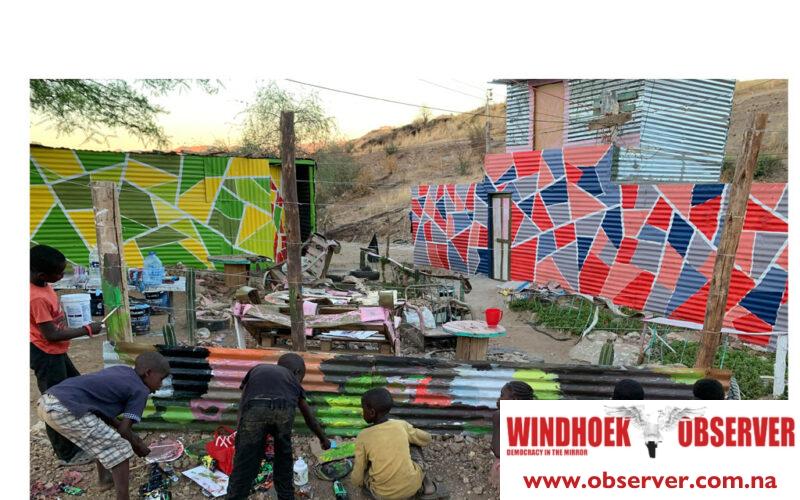Who is Ndako Nghipandulwa?
My name is Ndako Nghipandulwa, born in Kwanza-Sul, Angola, in 1988. After Namibia gained independence in 1990, my parents relocated to Windhoek, where I was raised in the Khomasdal area.
How has your background and upbringing influenced your personal and professional development?
I grew up in a household where experimentation was encouraged. This environment allowed me to discover my strengths, weaknesses, and preferences. During my childhood and teenage years, I participated in various sports like soccer, cricket, rugby, and tennis. In high school, I engaged in entrepreneurial endeavors, selling various items at school. In university I continued exploring different avenues such as starting a clothing brand with friends, and we would always be looking for opportunities to make an extra income. Despite experiencing mostly setbacks and failures, I was never dissuaded from pursuing new ventures at home. This upbringing significantly contributed to my personal and professional growth by honing my communication skills, salesmanship, and fostering fearlessness in trying new things.
When did you ‘discover’ that you had an interest in art?
I can’t pinpoint exactly when my interest in art began. It’s been a constant presence throughout my life—from childhood, through school, university, and into my professional career. Art has been a lifelong practice for me. I never even considered the possibility of making a career out of it, I didn’t know it was possible; I simply loved doing it.
What type of art do you do and have you had any exhibitions?
I create a variety of art forms, including painting murals and canvases with acrylic or oil paints. However, I’m primarily recognized for my nail and string artworks. While I’ve only held one solo exhibition to date (in 2022), I’ve participated in numerous group exhibitions over the years, spanning locations such as Namibia, South Africa and Beijing
How did Project Babylon come about?
While creating an art piece depicting an informal settlement, I visited Okahandja Park to capture reference pictures, as it’s the closest settlement to my home. During my visit, I encountered children playing in the area. Upon completing the artwork, I felt uneasy profiting from it while the children depicted wouldn’t benefit. So, I returned to the settlement, found the children, and spoke with their parents.
I pledged to donate the proceeds from the artwork to their households. A few months later, after the artwork sold, I fulfilled my promise by donating school clothes, food, and essential items like sanitary pads to the children and their family. During this visit, I noticed a disheartening message, “Poor, Slave Man,” painted on one of the doors in the settlement. This encounter sparked the idea to paint the area.
Can you explain how the owners of these structures get involved in the project?
While painting the structures in the settlement, some owners were absent due to work commitments. However, some of them actively participated by selecting the colors for their homes. Additionally, certain residents of the area assist in painting not only their own structures but also those belonging to their neighbors, fostering a sense of community involvement and collaboration.
How do they (owners) benefit from this initiative?
Project Babylon is an endeavor to elevate both the visual appeal of the community and instigate a fundamental shift in residents’ perception of themselves and their environment. The primary objectives were to improve the overall aesthetics of the community, foster a sense of pride among residents, and engage both children and adults in the creative process. This initiative has proven successful as evidenced by the positive reception from residents. Their contentment with the transformed neighborhood is palpable, and a heightened sense of pride is evident. The community members have conveyed their satisfaction by sharing anecdotes of frequent visits and photographs taken by passersby, who consistently express admiration for the revitalized homes. This outcome aligns with one of the project’s core goals.
How about the youth?
We’ve actively involved the youth in the creative process by encouraging them to paint the yards and decorate tires and stones in the area. Additionally, we’ve begun painting murals on some of the homes, with plans to continue this initiative. The youth have been and will continue to be engaged in these projects, providing them with valuable opportunities to learn painting skills and express their creativity.
Is it true that you are also promoting art in these communities?
Yes, indeed. We are actively promoting art within these communities. As previously mentioned, our aim is to sustain youth involvement in painting murals on select homes. Additionally, we’ve hosted a painting session where each participant was provided with their own canvas to paint and take home. This aspect of the initiative will also be ongoing.
What is the end goal for Project Babylon?
Building on the momentum, we are aiming to paint at least 100 homes and further transform the entire neighborhood. The success of this inaugural phase has not only demonstrated the feasibility of the project but has also facilitated the gathering of resources needed to sustain and expand its impact. Looking ahead, the next phase of Project Babylon will embrace a more extensive collaboration with additional artists. More mural painting will be introduced to complement the home transformations, enhancing the overall aesthetic appeal of the area.
This evolution represents a collective effort towards fostering a vibrant, beautiful, and prideful community. I am excited about the journey ahead, confident in the positive trajectory set by this project, and eager to continue contributing to the enrichment and revitalization of Okahandja Park and hopefully more areas.
The impact of Project Babylon extends beyond the painted homes, as it has become a symbol of community unity and revitalization. The achievement of broader objectives, coupled with media recognition, positions the project as a catalyst for positive change, not only within Okahandja Park but also in inspiring and resonating with a larger audience. I aim to train and inspire people to continue or start similar initiatives without me.




